This is a continuation of a series of posts on the Sony a7III. You should be able to find all the posts about that camera in the Category List on the right sidebar, below the Articles widget. There’s a drop-down menu there that you can use to get to all the posts in this series; just look for “a7III”.
In the last post, we saw that with raw compression turned on, during continuous bracketing, the a7III’s engineering dynamic range (EDR) dropped significantly, and the precision went to 12 bits. That made me wonder what happened to the EDR in continuous high (CH) mode, with full a mechanical shutter (MS), electronic first-curtain shutter (EFCS) and electronic, or silent shutter (ES).
So I made a series of darkfield exposures under each condition, at all ISO settings from 100 to 25600. Some of the sample points are doubles or triples at the same ISO because it was hard to control the number of exposures in CH.
They all have diminished EDR, and they all look about the same. Because of the variable number of exposures, it would be a minor pain for me to plot the curves on the same graph, but it’s easy for me to plot them as a single curve and ask you to ignore the “flyback” line between the lowest ISO and the highest.
Pretty darn similar, and probably all do the statistical variation.
If we look at the ISO 100 MS shot, we can see that the precision is reduced to 12 bits:
Too bad.
There is an oddity here that we saw in the continuous bracketing case: the best EDR is not obtained at base ISO. I don’t know why, yet.
If we look at the a9 in compressed CH mode with the mechanical and electronic shutter, we see something similar:
The interesting thing here is that the a9 has worse EDR with the mechanical shutter than with the electronic one.
The a9 does get the best EDR at base ISO, which is what you’d expect.
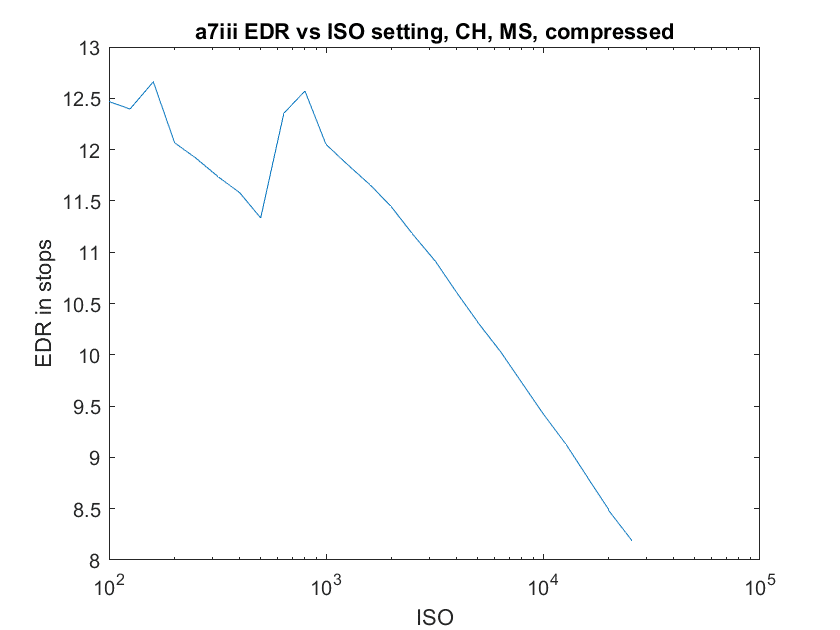
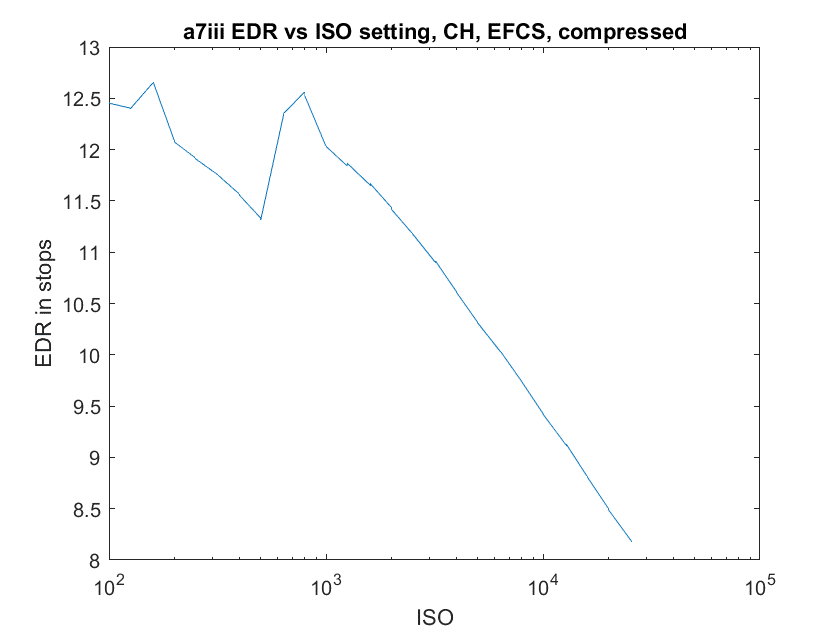
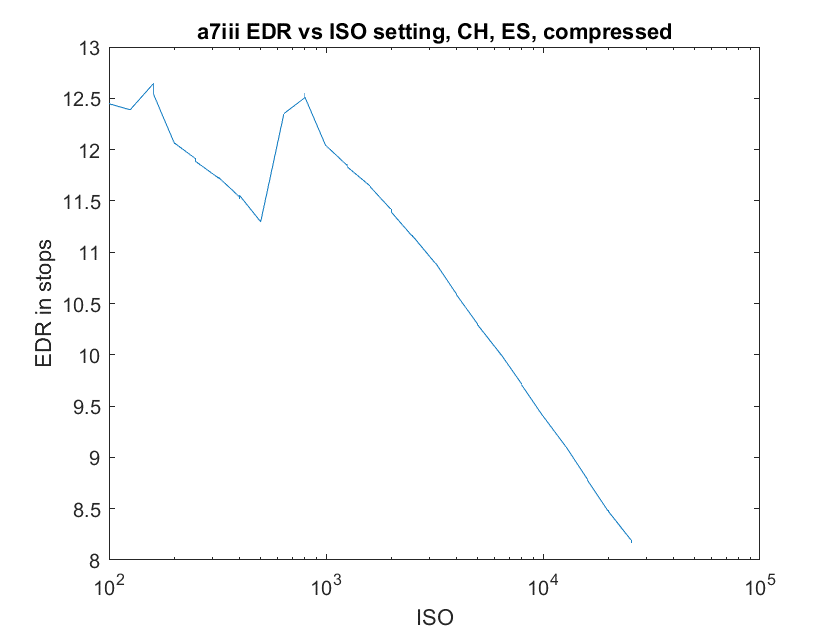
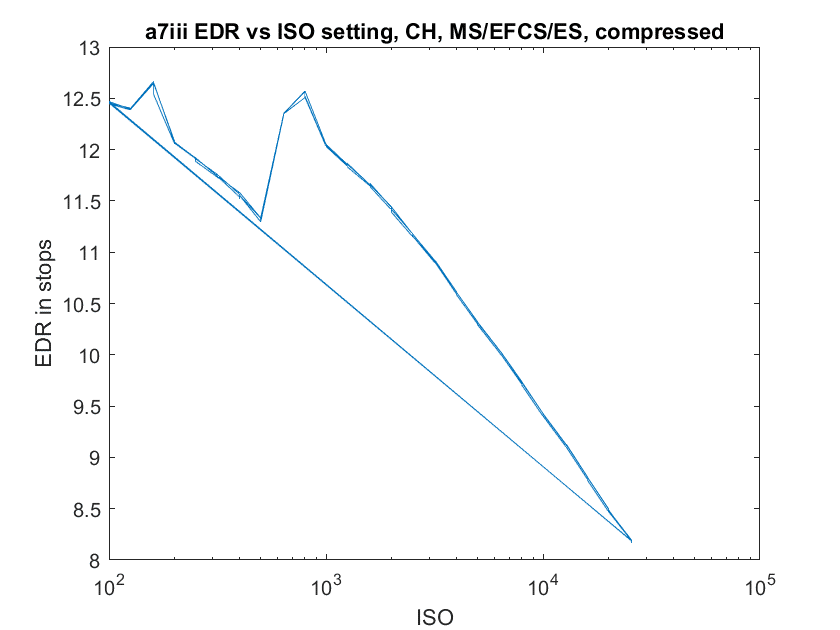
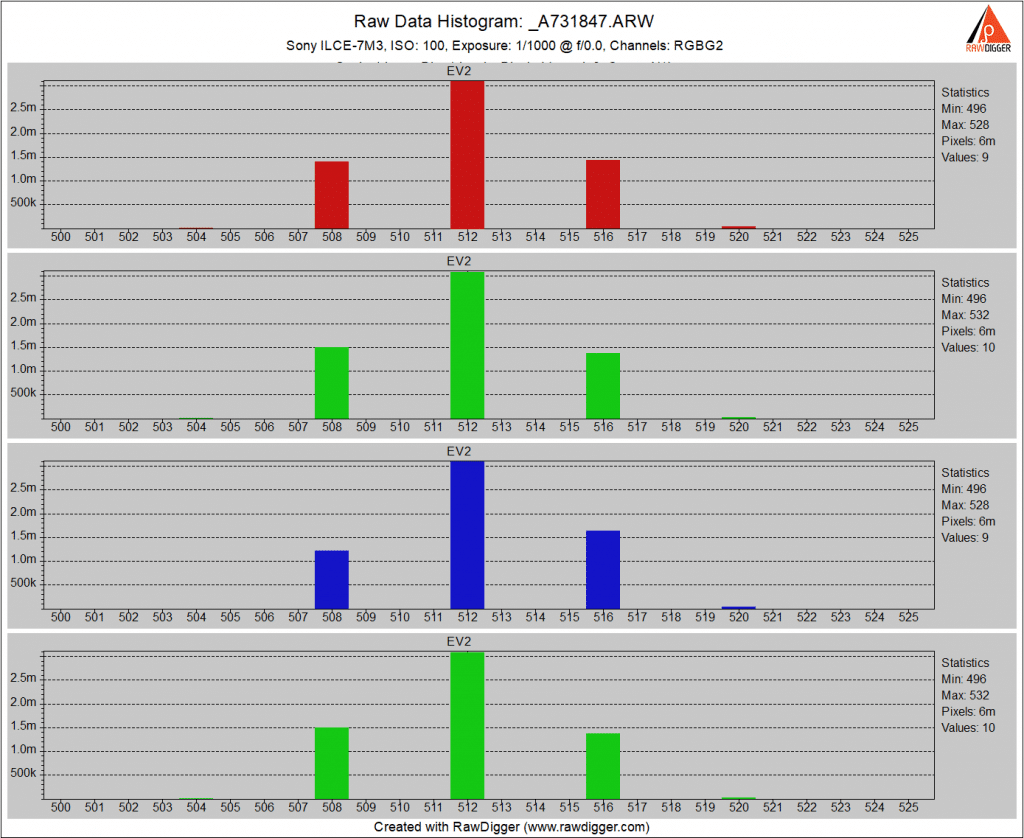
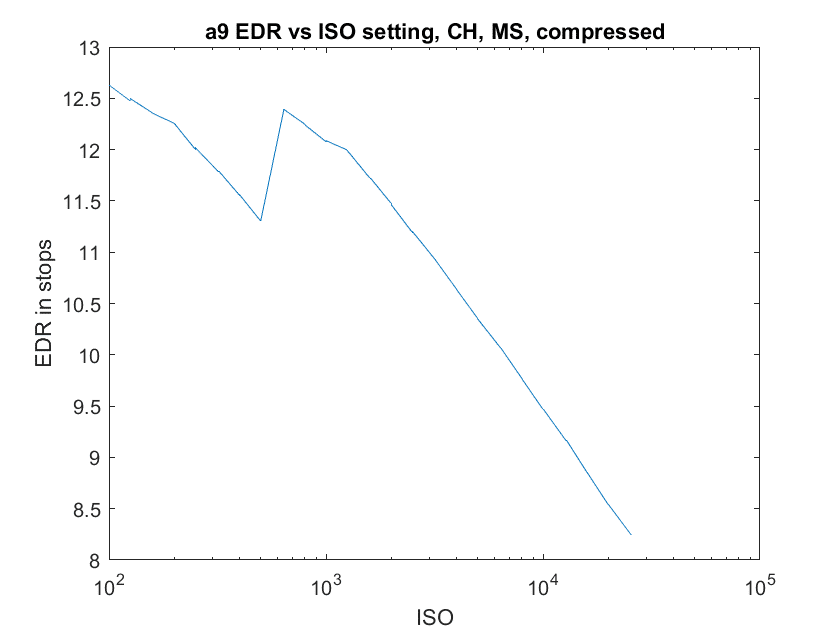
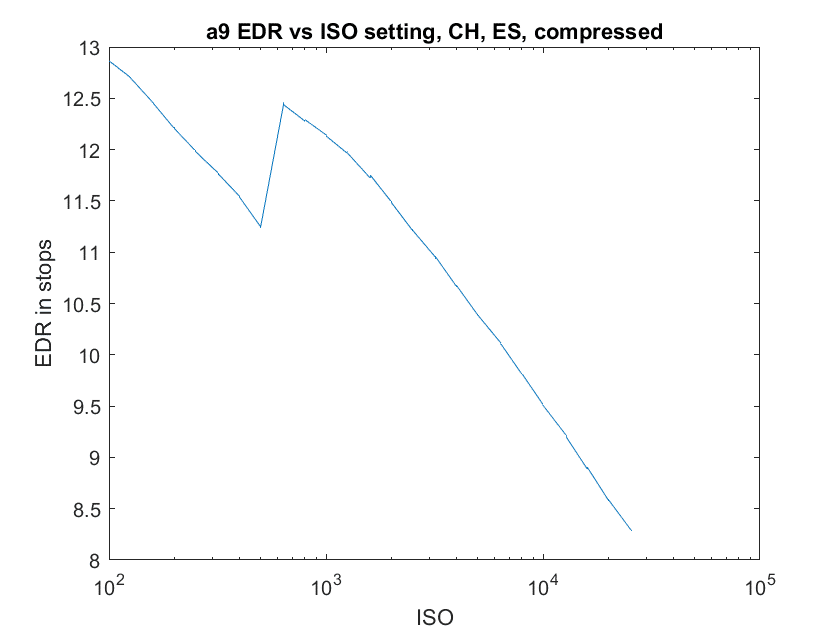
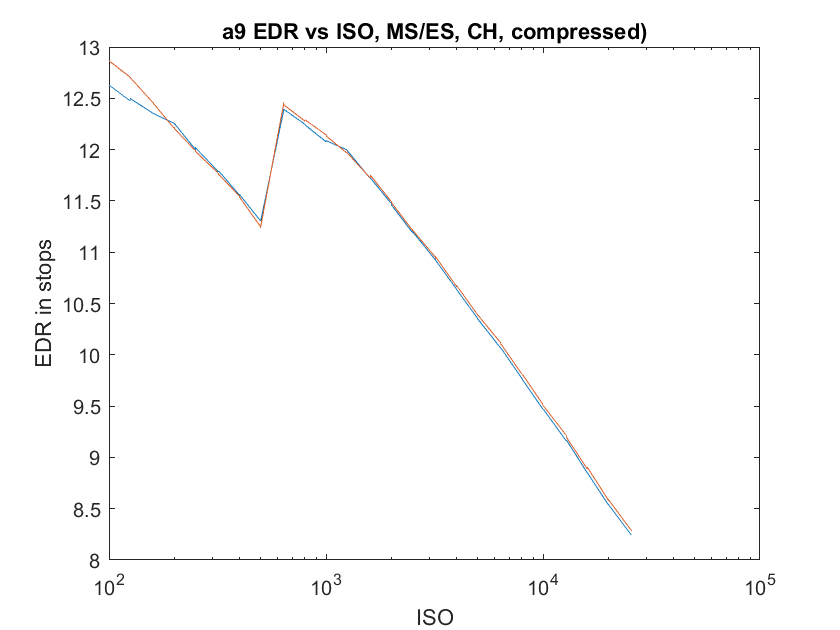
Johnson says
So in continuous low compressed raw, precision is 14 bit, but in continuous high compressed raw, precision drop to 12 bit. How about continuous mid? Is it 14 or 12 bit? Just wondering what’s the fastest speed one can go without dropping photo quality with A7 iii.
CK says
What is EDR and what does this test result mean? I appreciate the technical report, but I admit that I’d like a conclusion that is for the layman. Given that I could learn quite a bit about what we have here.
JimK says
http://www.strollswithmydog.com/engineering-dynamic-range-photography/
EDR is a measure of one kind of noise in an image, in relation to the maximum bright value possible.